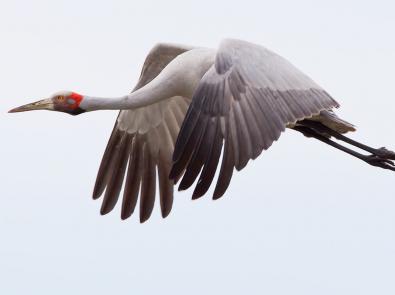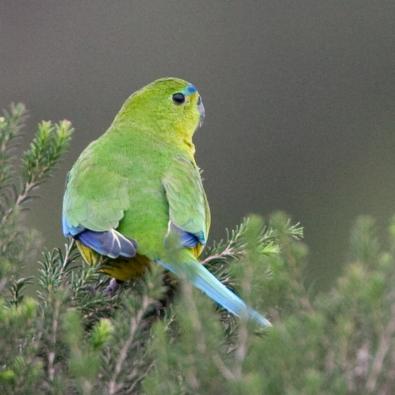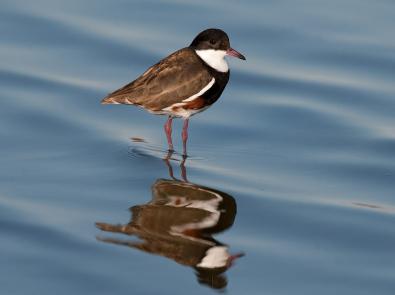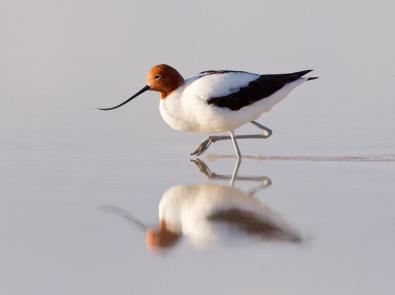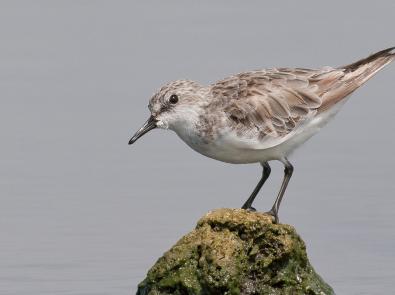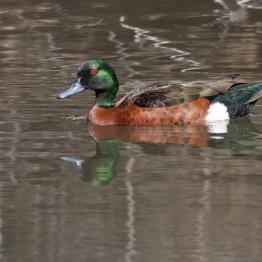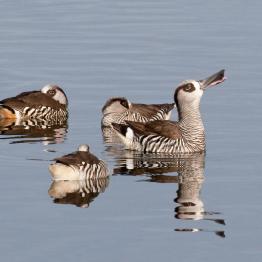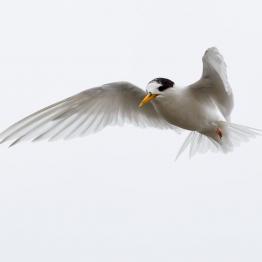The Western Treatment Plant provides a haven for tens of thousands of birds, thanks to ample water and a variety of landforms and plants. Take a closer look at the site and some of its feathered inhabitants.
Get the latest birdwatching updates
Our online birdwatching community hub is the main way to stay informed of important updates, including safety and site access changes. We highly recommend you click ‘follow’ to receive updates via email.
Why is it a bird haven?
As we’ve improved the efficiency of our sewage treatment processes, we no longer use all of the Western Treatment Plant’s lagoons. These have become great bird habitat, with leftover nutrients attracting plenty of insects to eat and water available all year round.
More than 295 bird species have been recorded at the plant, which is recognised at as a wetland of international importance under the Ramsar Convention, and as one of Australia’s best birdwatching sites.
Threatened bird species
Brolga (Antigone rubicunda)
The Brolga is listed under Victoria’s Flora and Fauna Guarantee Act and is considered vulnerable in Victoria. It is also listed internationally in the International Union for Conservation of Nature ‘Red List’ of threatened bird species.
Brolgas have been recorded successfully nesting in saltmarshes next to the Western Treatment Plant, moving with their chicks onto the plant’s grasslands to forage. To support the continued presence and increased numbers of Brolgas, we undertake fox control at the plant.
Orange-bellied Parrot (Neophema chrysogaster)
These beautiful small parrots are an extremely rare and critically endangered species, on par with the Giant Panda and Siberian Tiger.
They are migratory birds: breeding in Tasmania in summer and migrating to the Victorian coast in autumn, then spending winter foraging for tiny seeds found in areas of coastal saltmarsh, from South Australia’s Coorong National Park to Melbourne. The Western Treatment Plant is one of the very few places they can be seen in winter.
Once fairly common in coastal areas, Orange-bellied Parrot numbers have declined dramatically since the 1940s. As a result of drainage, predators and competition for food, only around 50 birds can be found in the wild today.
Shorebirds
The site has recorded some of Australia’s rarest shorebird species, including the Asian Dowitcher and Buff-breasted Sandpiper. Three-quarters of these species are migratory: breeding in Siberia then migrating south to avoid the harsh northern winter. Some have been known to make the 25,000-kilometre round trip up to ten times in their lifetime!
The birds feed on the intertidal mudflats along the plant’s foreshore, which are exposed at low tide. Enriched by treated wastewater, these support enough invertebrates to feed around 16,000 birds. Ponds managed by Melbourne Water provide an alternative feeding habitat outside the few hours of low tide – another one of the site’s great advantages.
Red-kneed Dotterel (Erythrogonys cinctus)
The dotterel is a small plover, with its name referring to its long legs that are deep pink up to the knee. Its feeding habits are typical of this family: it will walk or run a few steps along the soft surface of the mudflats, pause upright then tilt forward to jab at food before moving on.
Up to 250 Red-kneed Dotterels have been recorded at Western Treatment Plant at a single time.
Red-necked Avocet (Recurvirostra novaehollandiae)
The Red-necked Avocet inhabits shallow ponds and flooded inland areas. It is one of eight shorebird species that breed at the site, building nests along the banks of swamps and lagoons lined with shellgrit and vegetation.
Avocets are easily distinguished from their close relations, the stints, by their beautiful, distinctive and slender upturned bill. They feed in shallow water by sweeping the bill from side to side to detect small animal prey.
Red-necked Stint (Calidris ruficollis)
The Red-necked Stint is the smallest and most abundant of Australia’s migratory shorebirds.
In September, up to 8,000 stints arrive at Western Treatment Plant from their breeding grounds in north-eastern Siberia, and can be frequently seen along the mudflats.
The bird’s name comes from the plumage it displays during its breeding season. The stint appears grey and white during its time in Australia, though some individuals begin to exhibit their breeding plumage shortly before returning north.
Waterfowl
The Western Treatment Plant is an important refuge for waterfowl during drought and the duck-hunting season. As a permanent wetland, the plant’s lagoon system can support up to 120,000 waterfowl, with Lake Borrie alone carrying more than 70,000 in the past.
Chestnut Teal (Anas castanea)
The Western Treatment Plant supports the largest population of Chestnut Teal in south-eastern Australia. Some birds nest in the dense grass surrounding the lagoons and in nesting boxes provided in Lake Borrie.
Freckled Duck (Stictonetta naevosa)
Australia’s rarest duck species is the Freckled Duck, which can be fairly regularly seen at Lake Borrie.
Pink-eared Duck (Malacorhynchus membranaceus)
Pink-eared Ducks are found throughout Australia but are not common to coastal areas. They are distinguished by their small size and zebra striped plumage.
Although this species of duck does not breed in any great numbers at the Western Treatment Plant, the ponds support up to 40,000 during late summer.
Other birds of interest
Fairy Tern (Sterna nereis)
Fairy Terns hunt in shallow waters by plunge-diving beneath the surface for small fish. They are aggressive and noisy birds that will fly at and defecate on intruders. Terns nest on open sand beaches, free of vegetation and from human disturbance.
Lewin’s Rail (Rallus pectoralis)
One of the most difficult bird species to find, Lewin’s Rail inhabits densely-vegetated wetland areas along the coast. They are very shy birds and need dense vegetation to retreat to, establishing a network of ‘runways’ through which they can move.
They use their long, slender bill to probe in damp mud for food, such as insects, molluscs and invertebrates.
Pied Cormorant (Phalacrocorax varius)
The Western Treatment Plant has the largest permanent breeding colony of the Pied Cormorant in Victoria. Between 700 and 1,000 pairs of cormorant use inundated trees for nesting and roosting. Initially at Lake Borrie the colony moved to trees in 25W Lagoon where they are more protected from cold sea winds.
Cormorants generally breed in spring or summer, yet at Western Treatment Plant they raise their young during winter. The birds feed on fish in Port Phillip Bay, returning to their nests to feed the young.
See for yourself
Get a bird’s eye view of the plant with our slow tour:
You may also like...
Birdwatching access
Apply for access to birdwatch at the Western Treatment Plant, and learn about visitor safety requirements while on site.
